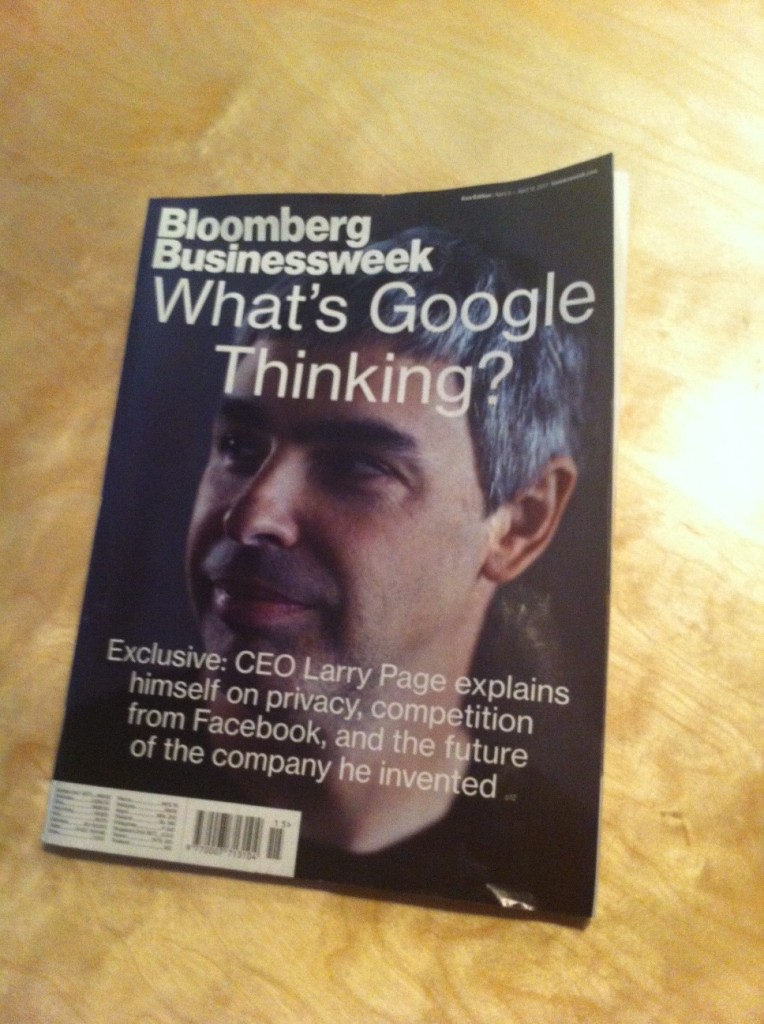
It’s a good feeling when an impulse purchase, in this case necessitated by an emergency need for pain killers and a strict $5 eftpos limit at a train station news agency, leads to valuable discovery.
After a quick scan of the magazine shelves I opted for Bloomberg Businessweek. It was an aesthetic decision. Simple bold masthead, neutral colour scheme full bleed image and a big headline about Google. I joined my travelling partner and boarded the train. I am NOT a businessman. I am a graphic designer and i’m pretty sure that I am not the target audience, however I found it to be the best design magazine I have read this year in both it’s layout and its content.
Layout
The grid was pretty scrappy but there were so many IDEAS. Margins were either non existent or crammed with supportive facts, anecdotal illustrations of graphical representations of the textual content. The typography was simple and unadorned with articles navigating elegantly from start to finish. There was no Jan, Emil, Herb or Eric looming over its shoulder. The aesthetic led to my surprise it’s brashness. It felt free and dedicated to the editorial focus of its content. No design magazine that I’ve seen/read recently has this freedom.
Content
Graphic design as an industry has an inherent link to business. It is a commercial undertaking (even more so when it’s trying not to be) and anyone working within the industry needs to be at peace with this. The articles in Bloomberg Business were plainly written, with minimal business/economic jargon and despite it being American-centric, fairly international content. With well edited coverage on innovation, products, economics, management, markets, politics, media – all of which design is or should be entwined. To be a good designer it is more important to be aware of business than of graphic design. Obviously we must know our tools, both our programs and technical restrictions and the typographic and compositional rules of the art form. These are rendered useless without a strong understanding of the message the message’s environment and the message’s recipient.
Design literature should make us better designers and a smarter industry collectively, though most magazines fail to go further than patting ourselves on the back. It is important that the industry’s acheivements and the best of our designs are documented and discussed but this does not really make us better at our job or improve the position of the industry – especially Australia.
Tags: Australia, Business, design, Industry— Posted on by